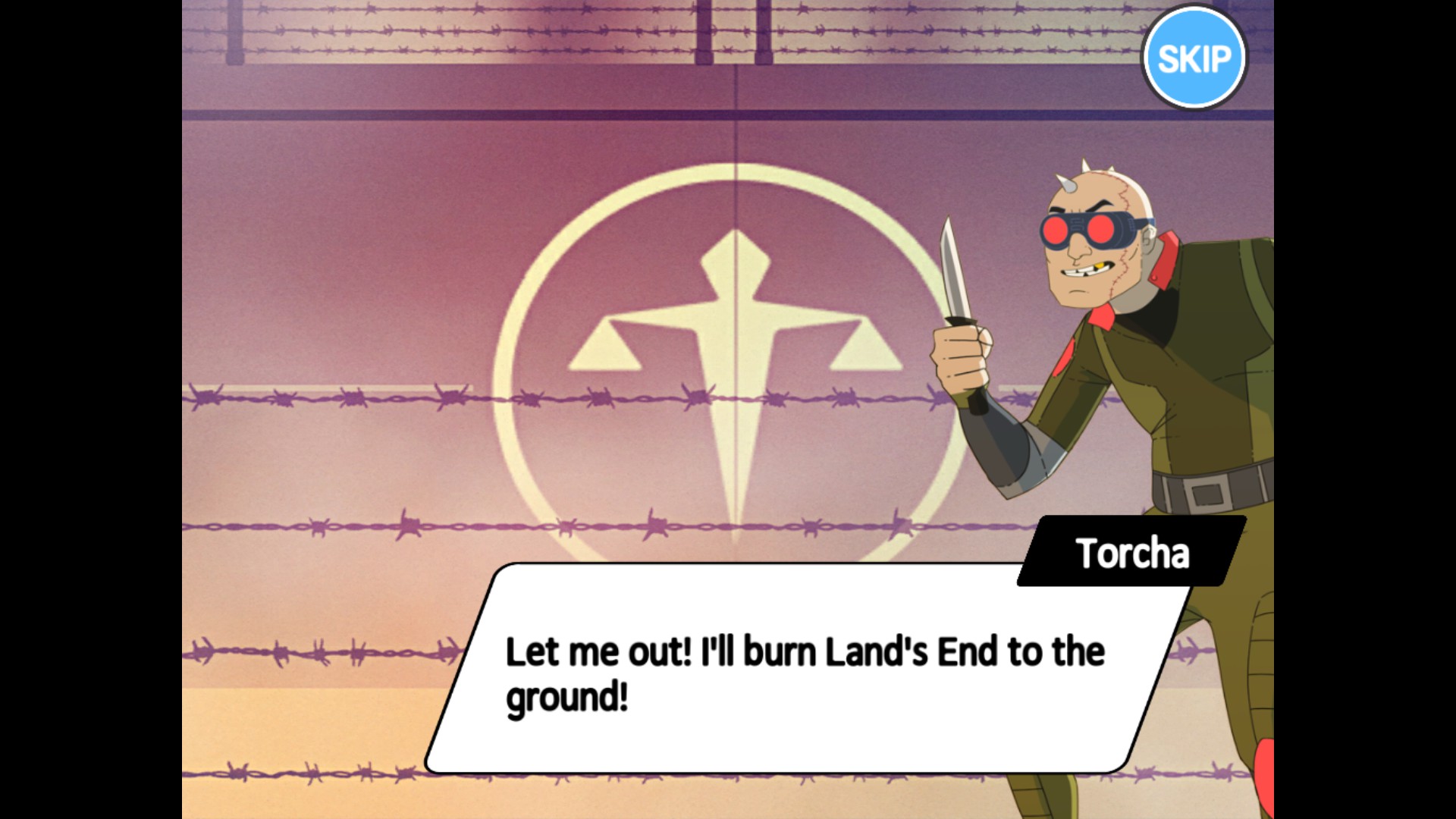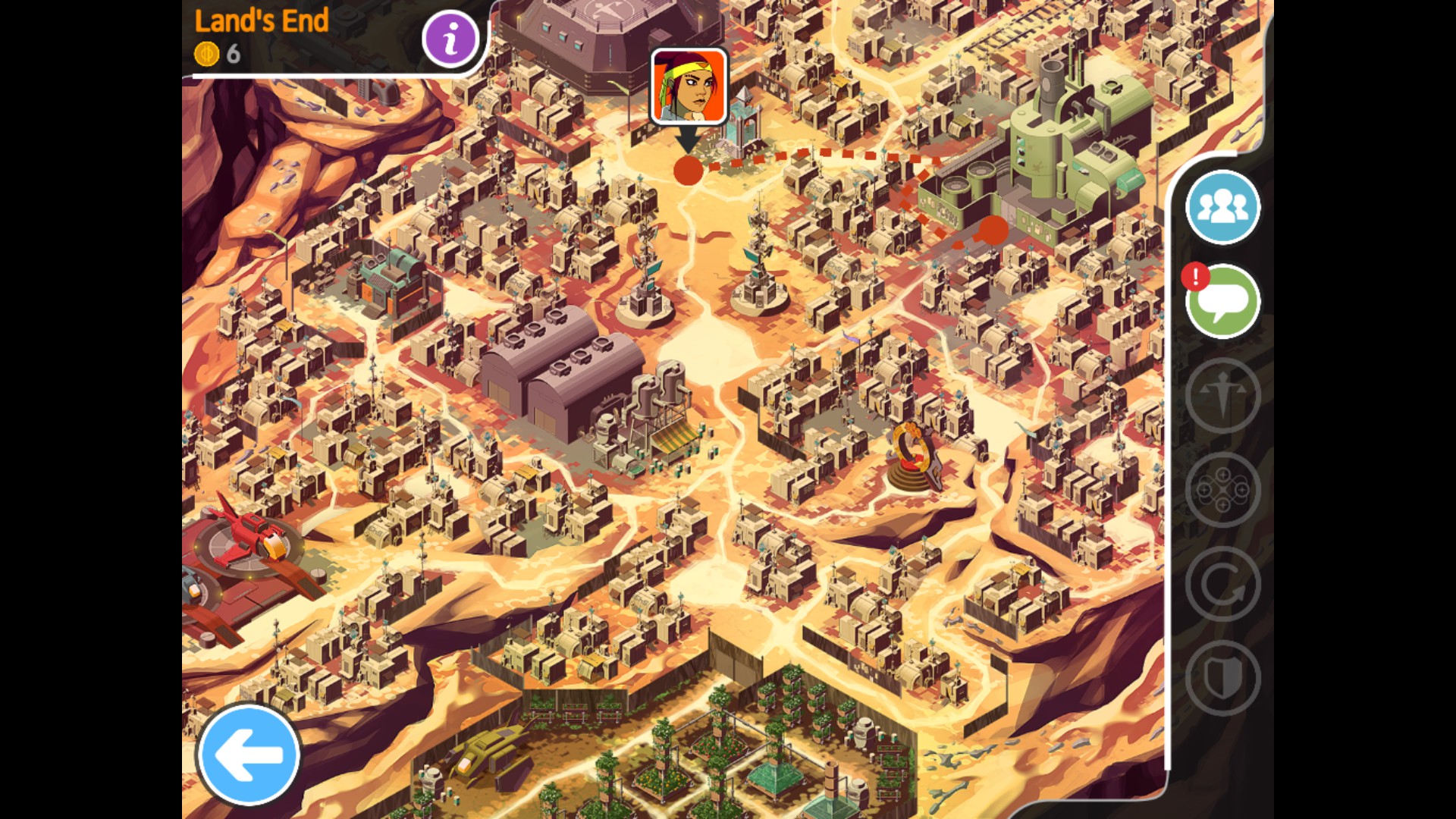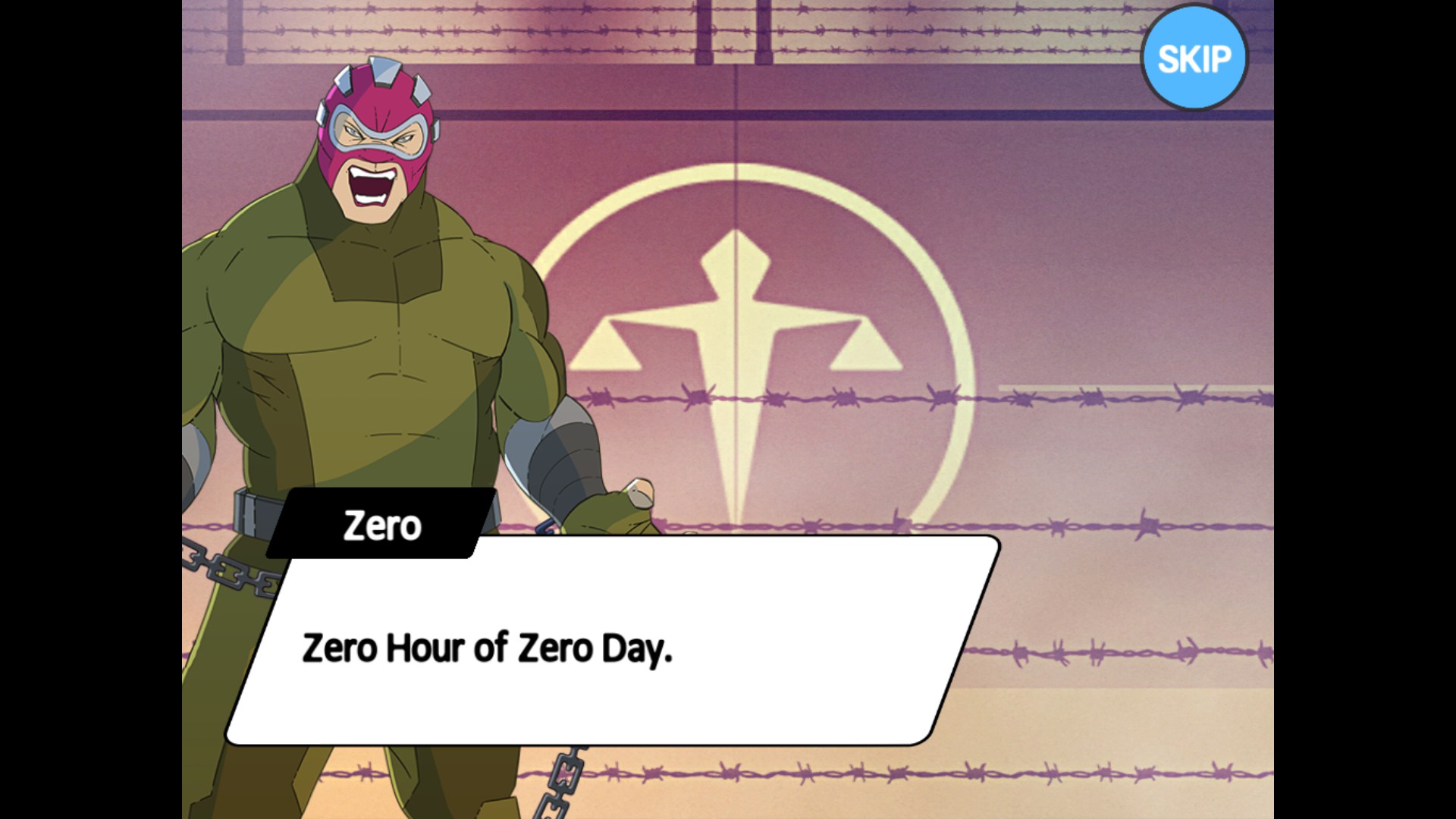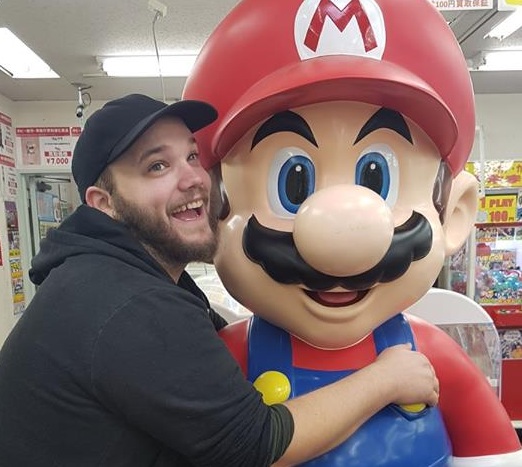
I first played Ticket To Earth (TTE) as a demo at PAX, and I was genuinely intrigued by my short time with the game. A turn-based RPG with puzzle elements sounded like a grand old time, and, of course, it helped that I was playing what I think will be the most powerful of the player characters. After a successful launch on mobile, a Steam Greenlight campaign was started for a port to PC, and it had my wholehearted support. Now that I’ve got the game proper in my hands, I find the “full” experience of TTE lacking in comparison to my experience with the demo. I say “full,” because I didn’t realise the game would be released episodically, and, personally, I think that style of release doesn’t work for the title. Perhaps it was the elation of the con around my during my first crack at the game, or maybe something went wrong in development since then. Either way, some issues need to be sorted out as the series progresses.

So does this guy. SO many issues.
TTE is a mobile game first and foremost, and I’ve just been playing the PC port. Mobile titles aren’t exactly known for their narratives, and if it weren’t for the fact that a lot of love was clearly poured into this game’s story, I’d barely even be mentioning it. The issue is that it’s just…not very good. The central conflict for the plot is split between three different areas of the story, with none of them being clearly tied to one another. Important details for narrative and character development are relegated to optional side-conversations between missions that could have easily been weaved into the game itself. At the very least, a majority of the side missions could have used this extra narrative kick.
A lot of the dialogue reads like it was written by an edgy teenager whose political ideas are taken straight from Reddit, penned immediately after a binge session of Veronica Mars and Marvel Defenders. One of the main characters, in particular, Rose, has the emotional maturity of a twelve-year-old despite the years of spiritual training she’s supposed to have undertaken. Indeed, you’ll find that characters contradict themselves a lot if you take a few seconds to consider the difference between what they’re saying and what they’re doing. There’s also a lot of references to real-world sayings that feel really out of place and will lose their relevance in a very short amount of time. Some of them already have. The only character I had no real issue with was Malady, the most prominent “bad guy” of the game. She’s your classic, dyed-in-the-wool villain with no qualms or hangups about what she’s doing, and I can respect that. Her mysterious motives are the only intriguing part of the story for me at this point.

Because Lord knows I wasn’t playing it for this out-of-place Lovecraft reference.
Throughout my time with the game, it felt as though a balance between puzzle and tactical play was never properly struck. The grid that characters move around is populated with coloured squares that correspond to abilities, and your movement is limited by how many tiles you can chain together in a single action. This relies on the tiles being adjacent to one another and herein lies the problem. Respawned tiles are randomly assigned a colour, which means there’s no way of tracking them, and there are no abilities to skip over tiles or jump around the map. You can alter the colour of tiles around you, but this is an ability that needs to be charged over time and isn’t always at hand when you need it.
This kind of mechanic inserts far too much luck into how each battle plays out and can make the difference between a ridiculously quick and easy win, or a long, drawn out defeat (and vice versa). Running from an enemy to keep some distance is pointless when you inadvertently create a path that leads directly to you. Taking out a group of enemies becomes trivial when you’re able to pick up a full third or more of the tiles in a single run right from the outset. The game has a large focus on tactics and changing your equipped abilities to suit each mission, so much that there’s no room for it being a puzzle game. Likewise, there’s too much random luck for it to really have much depth as a tactical RPG. The end result is a game that wants to be two genres at once without successfully pulling off either.

And when you CAN change tiles, holy crap dude…
There are two sides to TTE’s presentation here, one being the game’s overall style, which was good, and the other being how the game has been ported to PC, which isn’t great. I’ll get the bad out of the way so we can end on a (somewhat) high note. For starters, despite being the default setting, the native resolution of the game doesn’t fit your standard 1920×1080 size, with black bars taking up edges of the screen. All instances of instructions to “tap” the screen have been left in, and the menus weren’t really updated for a PC-friendly interface. Overall, it just feels like a lazy port with no visual or menu changes implemented, and no thought put into how a mobile title would play on PC. Hopefully, this changes with future updates.
One last issue is the update schedule, which currently doesn’t exist. Only episode one (of four) has been released so far, with no definitive date set for episode 2, and no planned schedule for the remaining episodes. With episodic games being well established, you’d think that creating a release schedule wouldn’t be such a difficult thing. At the time of writing this, Episode 2 for Ticket to Earth is slated for a nebulous “coming soon” release. I’m also unsure as to why the game is being released episodically; while the first episode ended on a logical break in the story, I feel like that should have just been a separation of chapters. I get the feeling that not enough will change overall to make the breaks between episodes worth the wait.

“Welcome to Land’s End, the last stop for fun.”
The soundtrack and sound design in TTE are okay, in the sense that it isn’t awful and fulfils its purpose. It’s nothing special, perhaps even a little repetitive with such a short playthrough time and a limited selection of music, and there’s no voice acting. What I’m saying is that you wouldn’t be missing out on anything by, say, muting the game and throwing on a line-up of Electric Six albums. One might even say that it improves the experience.
The game shows its strength in its artwork and visual presentation, particularly in the environment design and character models. Like many turn-based strategy games, the distant camera view means that you won’t see a huge amount of detail on them but TTE still manages to make each model distinct from this perspective. Being able to identify units on-sight, as opposed to investigating each one before you know who they are, is a big plus and TTE does it well. I also liked how the overworld map changed throughout the episode to reflect the damage caused by the events of the game. It’s a small thing, however, in a game where your control is limited to a handful of battlefields, it is nice to see your progress having some impact on the world around you.
The 2D art used for conversations between characters and other scenes ranges from well done and stylistically appealing to… Well, to Zero. To my mind, Zero is the exemplar of everything wrong with TTE’s artistic and narrative approach. Unlike Malady, Zero comes across as a bumbling fool of a villain, his success coming from pure luck over anything else. Despite having escaped, he continues to wear the standard prison garb of an olive green jumpsuit paired with what I can only assume is his own bright pink balaclava. This face piece is what helps to make him look like a shark with physical development problems, and he constantly talks about himself in the third person. Also, all his plans are named after himself. Zero is a parody of himself, and the weak points of this game feel as though their design was approached in the same way as his character design.

…. Brilliant.
I want to like Ticket to Earth, I really do. I know the game can be fun because I had a blast with the demo version at PAX. Perhaps things will improve in the next episode, with the mechanics being better suited for mid-to-late game content and the narrative picking up to be more enjoyable. Maybe the soundtrack will have better variety, and character dialogue won’t sound so hackneyed. Right now, however, the game feels a lot like its villain, Zero: forced, awkward, and barely aware of what it’s doing. Either the movement and action mechanics need to be adjusted to fit a randomised grid better or the grid tiles’ generation needs to be adapted to suit the tactical gameplay. All is not lost, this could very well be just a rocky beginning to something much greater… Assuming we don’t have to wait months for each episode.











